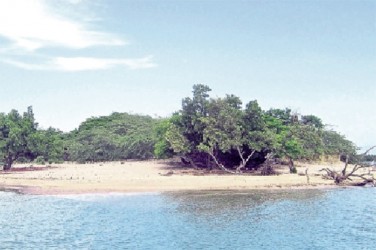(Jamaica Observer) After months of speculation played out in the media and the public domain, the Port Authority of Jamaica (PAJ) on Tuesday confirmed that Goat Islands will indeed be the site of a Chinese seaport. The port, which will form a part of the much-touted logistics hub, will provide 10,000 permanent jobs, Professor Gordon Shirley told the Jamaica Observer on Tuesday. “It will be the Great Goat Island and Little Goat Island and some lands to the north of there,” said Shirley, chairman and CEO of the port management agency.

The area to be developed will total 600 acres, he said. Shirley spoke briefly with the Observer after making a presentation on the physical infrastructure of the planned hub on the opening day of the Jamaica Logistics Hub Symposium at the Jamaica Conference Centre in downtown Kingston. He promised to give more detailed information on the subject today, to include the scope of the project, the timelines set for the start and completion of construction works and the possible environmental impact.
Goat Islands are situated in the Portland Bight Protected Area, an expanse of 1,876 km from Hellshire in St Catherine to Rocky Point in Clarendon. The Government declared it a protected area under The Natural Resources Conservation Authority Act, the Fishing Industry Act and the Wildlife Protection Act, in 1999.
Portland Bight, which is the subject of two international conventions — The Ramsar Convention and the UN Convention on Biological Diversity — boasts a largely undisturbed dry limestone forest which scientists say is one of the few remaining in the region. It also features coral reefs, mangroves, and seagrass, and is home to several endemic species, including the Jamaican iguana, which was brought back from the brink of extinction under a programme managed by the University of the West Indies, Hope Zoo in Kingston and a host of others in the US.
Confirmation of the planned transshipment port will no doubt be a blow to that programme, which had hopes of repatriating the critically endangered reptile on Goat Islands. It is also expected to be a blow to the work of conservationists who have argued since the project was first hinted at last August that a large-scale port development will decimate the already fragile ecosystem of Portland Bight.
The Goat Islands port is to be developed by China Harbour Engineering Company, the same investors who are behind the Palisadoes Shoreline Protection Project and the North/South link of Highway 2000, at a cost of J$1.5 billion. The PAJ, in a document on its website, said locations other than Goat Islands were considered for the port, “however, it was determined that the suitability of those locations was limited based on the scope of the project, as well as other strategic considerations such as proximity to the North/South Highway”.
In addition to the new port facility, other infrastructure development will include an expansion of the Kingston Container Terminal (KCT) by 80 hectares, the deepening of the channel between Port Royal and the KCT as well as the basin of the Kingston Harbour to a depth of 15 metres in order to accommodate larger ships.





